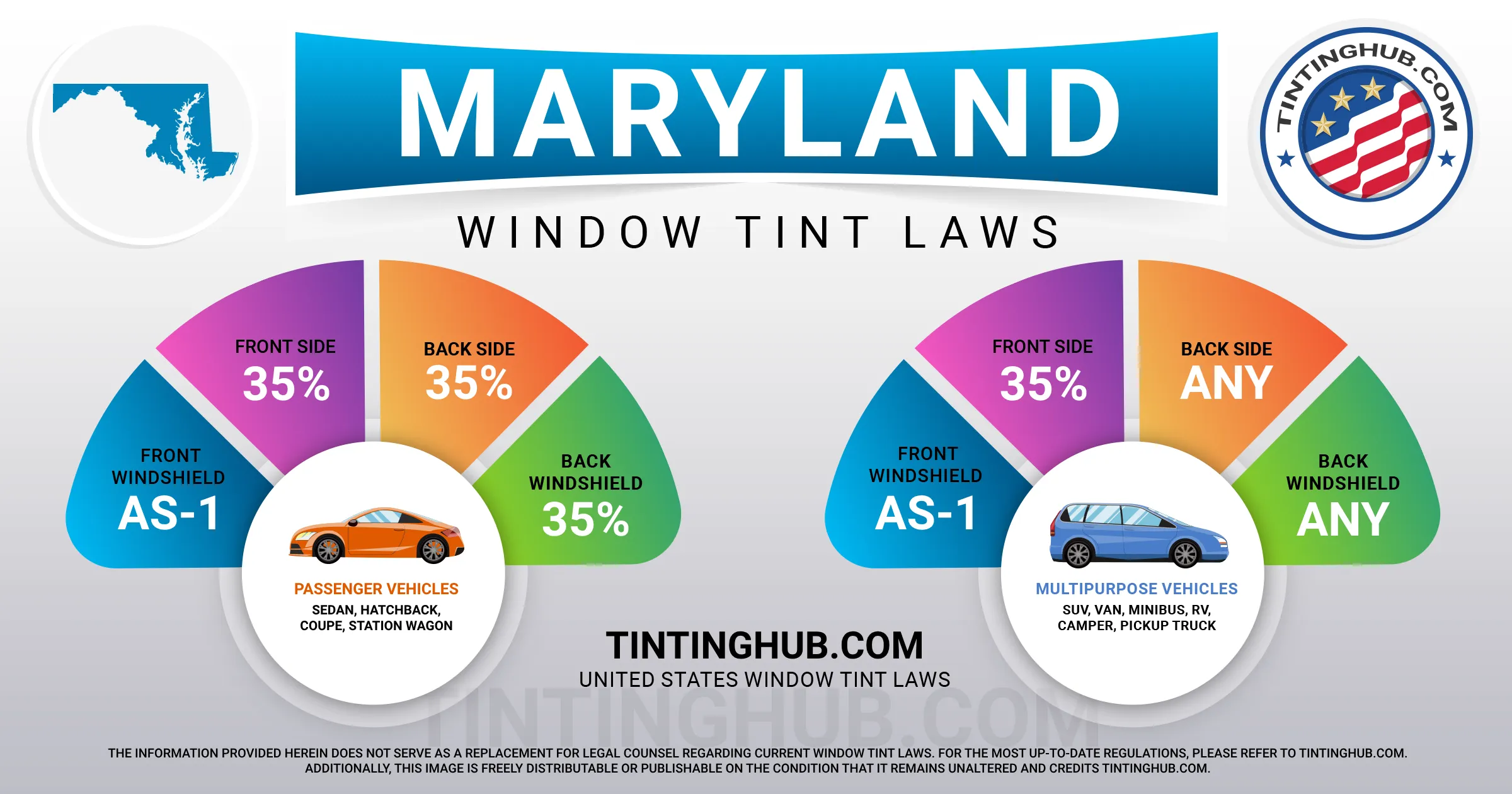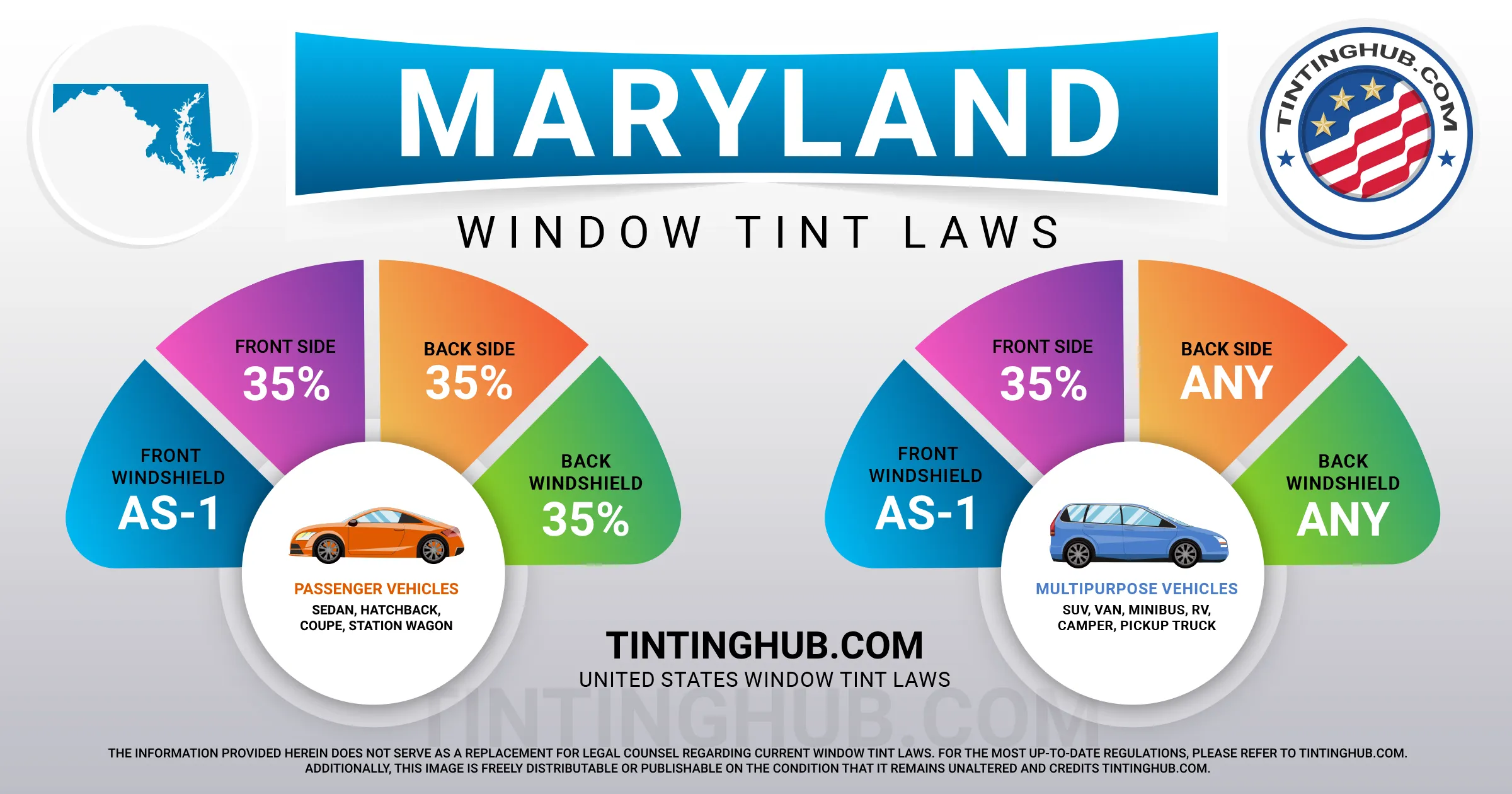Maryland Window Tint Laws (Last Update 2024)

Car window tinting laws in Maryland have been in effect since 1995. At AIPRM, we’re here to illuminate all the essential details about your car’s window tint, ranging from allowable darkness levels to reflectivity. Dive into the specifics of Maryland’s car window tinting regulations and ensure you inform yourself.

Understanding Window Tint Darkness
VLT, or Visible Light Transmission, measures the degree of visible light permitted to pass through your car’s windows. Maryland’s guidelines regarding light transmission differ for sedans and SUVs or vans.
Tint Darkness for Sedans
- Windshield: Non-reflective tint with a VLT of 35% is permitted on the AS-1 line or the top 5 inches of the windshield.
- Front Side Windows: More than 35% of light must be allowed in.
- Back Side Windows: More than 35% of light must be allowed in.
- Rear Window: More than 35% of light must be allowed in.
Tint Darkness for SUVs and Vans
- Windshield: You can apply non-reflective tint with a VLT of 35% on the AS-1 line or the top 5 inches of the windshield.
- Front Side Windows: You must allow more than 35% of light to pass through.
- Back Side Windows: You have the flexibility to use any level of darkness.
- Rear Window: You can use any level of darkness as well.
Remember, do not cover the brake light in the rear window with tint.
Deciphering Window Tint Reflection
Window tint serves not only to provide privacy but also to reflect incoming light, reducing glare and heat. In Maryland, specific regulations govern window tint reflection.
Tint Reflection for Sedans
- Front Side Windows: You can’t have a metallic or mirrored appearance.
- Back Side Windows: Prohibit metallic or mirrored appearance.
Tint Reflection for SUVs and Vans
- Front Side Windows: Prohibit any metallic or mirrored appearance.
- Back Side Windows: Do not allow metallic or mirrored appearance.
Additional Maryland Window Tint Regulations
In addition to darkness and reflection rules, Maryland has several other essential laws and regulations pertaining to window tinting:
- Side Mirrors: If the back window is tinted, dual side mirrors are required.
- Restricted Colors: Tint colors such as red, yellow, and amber are not permitted under Maryland law.
- Certificates: Manufacturers of window tint film need to certify the film they sell in the state. Ensure your dealer is using certified film.
- Stickers: Although Maryland law doesn’t mandate it, we recommend placing a sticker between the film and glass on each tinted window to identify legal tinting.
- Medical Exceptions: Maryland allows medical exemptions for special tint. Consult your state law for the specific terms of the exemption.
- Penalties: Violating tinting regulations can lead to a traffic offense and a SERO (Safety Equipment Repair Order) that requires certification of tint at an inspection station.
Various counties or places of residence may interpret Maryland’s tinting laws and regulations differently. For the most accurate information, we recommend double-checking with your local DMV or law enforcement authorities.
We last updated our information about Maryland’s window tint laws in 2024. Should you find any outdated or incorrect information, please don’t hesitate to contact us. At AIPRM, we take pride in being a trusted industry leader in providing accurate window tint law information.